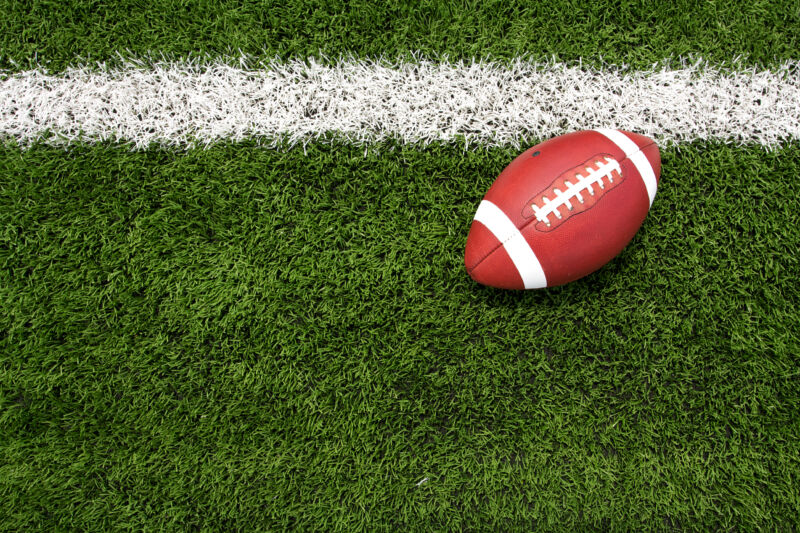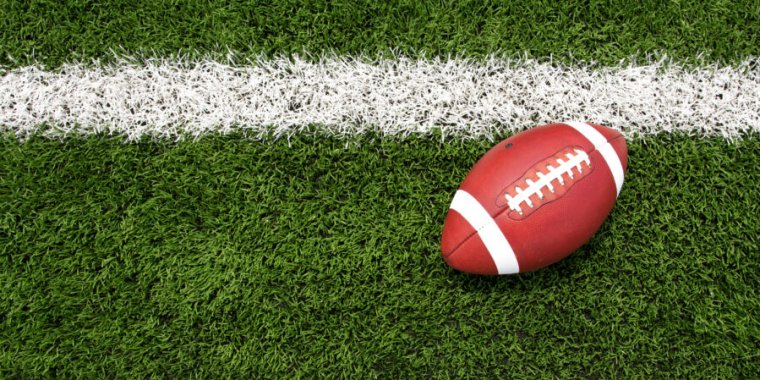Fake grass, real injuries? Dissecting the NFL’s artificial turf debate

iStock/Getty Images
Super Bowl LVIII will be played on a natural grass field in an indoor stadium in Las Vegas on February 11, 2024. How do you keep a grass field vibrant in such a hostile growing environment like the Nevada desert?
The answer: You don’t. By the end of the regular NFL season, paint was used to camouflage the reality that only a few scant patches of grass remained in Allegiant Stadium, home to the Las Vegas Raiders. Immediately after the Raiders’ last game on January 7, 2024, the field crew ripped up the remaining grass, installed California-grown sod over three days, and began the tedious process of keeping the grass alive long enough for the big game.
Herculean efforts to prepare a vibrant natural grass field for 2024’s Super Bowl LVIII are especially questionable when one realizes that Allegiant Stadium also has an artificial turf playing surface available (used by UNLV Football). Why don’t teams in hostile environments switch to more robust artificial turf, which is designed to overcome the many limitations of natural grass fields?
The answer lies in a debate over the safety of synthetic playing surfaces. While artificial turf manufacturers tout research that their products result in fewer injuries, the NFL Players Association (NFLPA) claims it raises injury risk and is advocating for its use to be abolished in the NFL. Let’s explore some key arguments of this debate, which continues to grab headlines with each high-profile NFL injury.
Super Bowl gridirons
Pressure for NFL field managers is especially high following the embarrassingly poor field conditions of last year’s Super Bowl. Super Bowl LVII took place at State Farm Stadium in Glendale, Arizona—another natural grass field in the desert (with a retractable roof, closed at night to protect the grass). Despite two years of preparation and an $800,000 investment, the grass field was a disaster, as players struggled to find footing on its slippery surface.
Veteran NFL groundskeeper George Toma attributed the mess to woefully improper field preparation. Players also complained about the slipping issue the previous time the Super Bowl was hosted at the natural grass field in State Farm Stadium eight years prior for Super Bowl XLIX in 2015. That year, the poor traction was blamed on the green paint used on the grass.
For perspective, some of the best sports field managers in the nation oversee field preparations for the Super Bowl. However, maintaining natural grass in desert conditions is so unfavorable (especially when the grass is sometimes indoors) that even the best can mess it up.
None of these issues existed when the Super Bowl was last played on artificial turf. Super Bowl LVI in 2022 was held at SoFi Stadium in Inglewood, California, home to both the Los Angeles Rams and Chargers. Not only did the artificial turf stand up to double the workload during the regular season (hosting home games for the LA Rams and the LA Chargers), but it also withstood a busy playoff season. The artificial turf field at SoFi Stadium hosted NFL games through the regular season and right up to the last playoff game when the LA Rams beat the San Francisco 49ers. Two weeks later, the Rams ended up winning Super Bowl LVI on the very same surface.
While turf avoids the durability issues seen with grass surfaces, players have widespread concerns about its safety—a recent poll by the NFLPA reported 92 percent of players favored grass.
Fake grass, real injuries? Dissecting the NFL’s artificial turf debate Read More »
